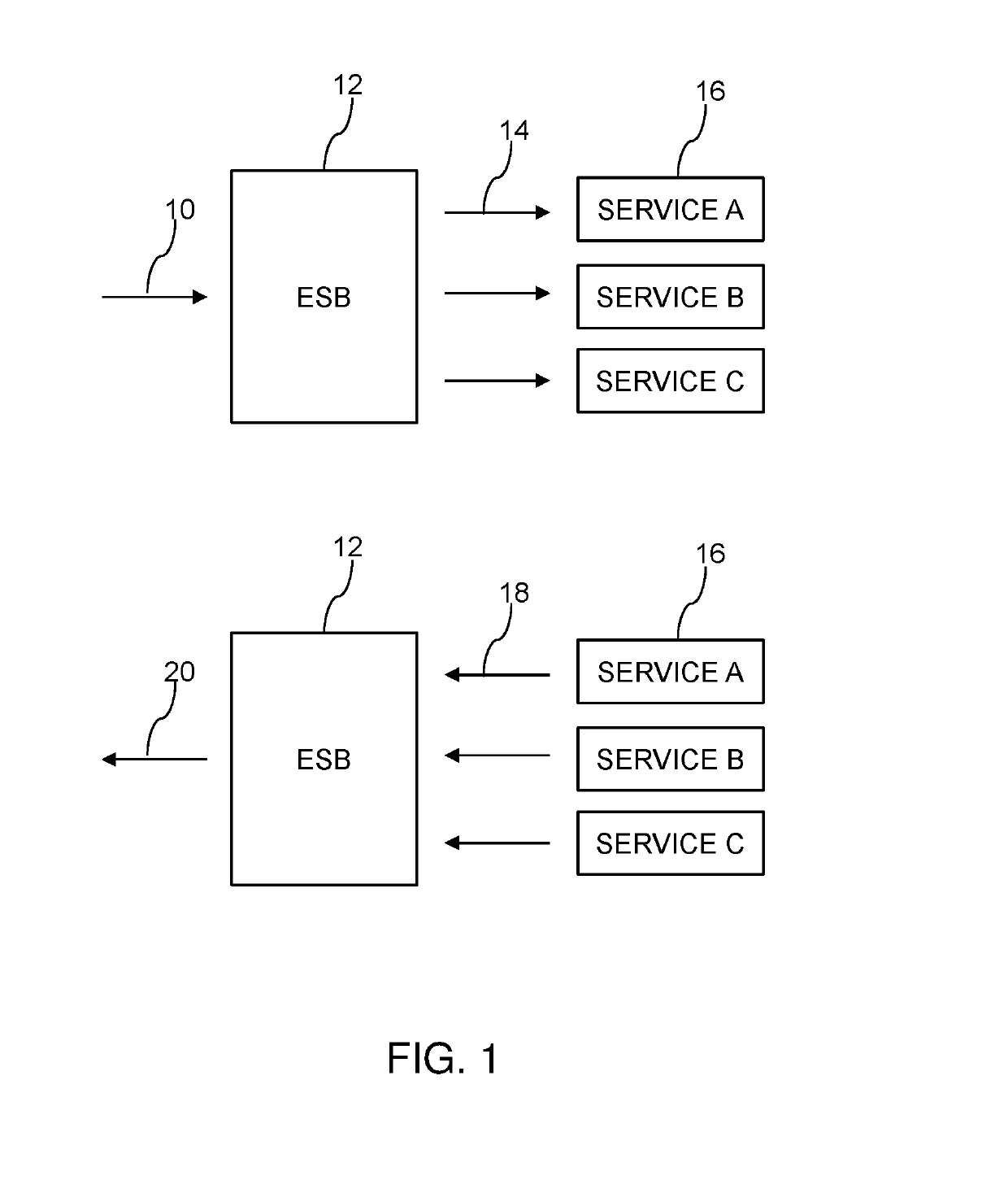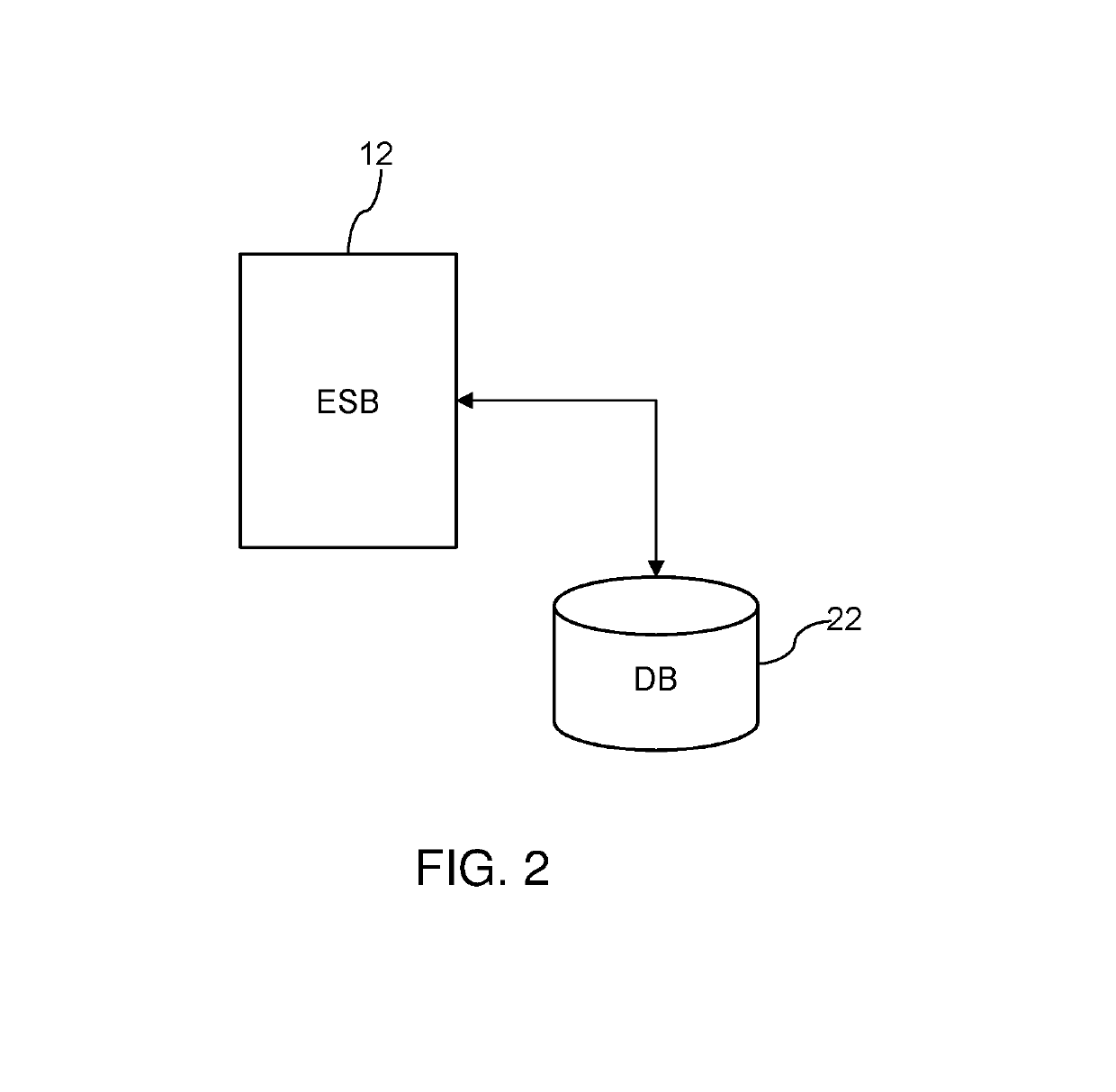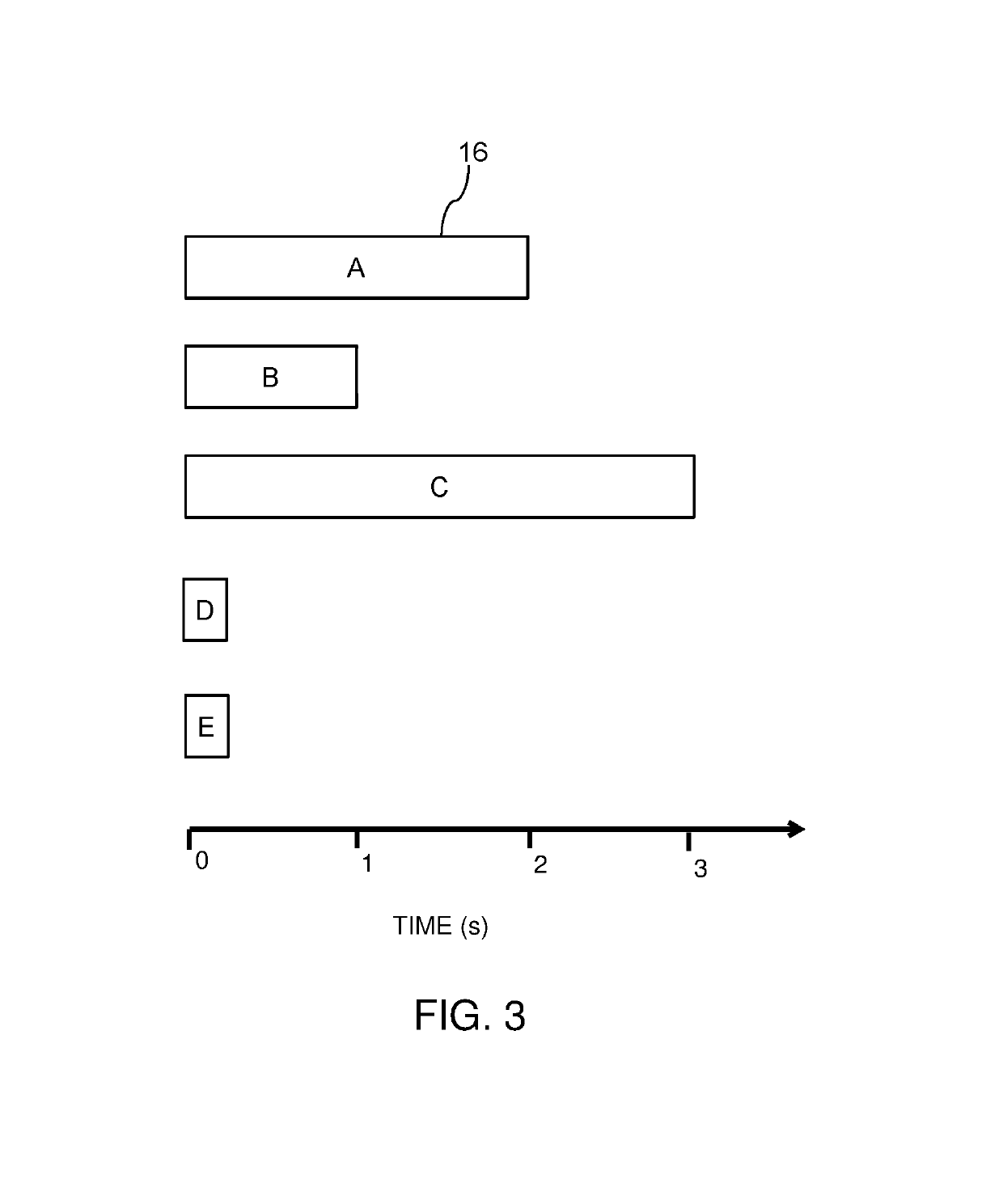Aggregation handling
- Summary
- Abstract
- Description
- Claims
- Application Information
AI Technical Summary
Benefits of technology
Problems solved by technology
Method used
Image
Examples
Embodiment Construction
[0014]FIG. 1 shows schematically an inbound request 10 being received by an enterprise service bus (ESB), the request 10 be processed based on multiple outbound service invocations 12. For instance, it may be desired, necessary, or required that the multiple outbound service invocations 14 be made in order to facilitate processing of request 10. The services 16 are the targets for the invocations 14 and the ESB 12 performs aggregation by receiving a single request 10, generating multiple outbound invocations 14, receiving responses 18 from the services 16 and then generating a single reply 20 to the originator of the request 10. The ESB 12 decides how the outbound invocations 14 are scheduled in terms of which invocations 14 are dealt with asynchronously and which invocations 14 are dealt with synchronously. The scheduling of the invocations 14 is designed to balance speed and efficiency.
[0015]As noted above, aggregation is an important enterprise service bus (ESB) pattern. Aggregat...
PUM
 Login to View More
Login to View More Abstract
Description
Claims
Application Information
 Login to View More
Login to View More - R&D
- Intellectual Property
- Life Sciences
- Materials
- Tech Scout
- Unparalleled Data Quality
- Higher Quality Content
- 60% Fewer Hallucinations
Browse by: Latest US Patents, China's latest patents, Technical Efficacy Thesaurus, Application Domain, Technology Topic, Popular Technical Reports.
© 2025 PatSnap. All rights reserved.Legal|Privacy policy|Modern Slavery Act Transparency Statement|Sitemap|About US| Contact US: help@patsnap.com



